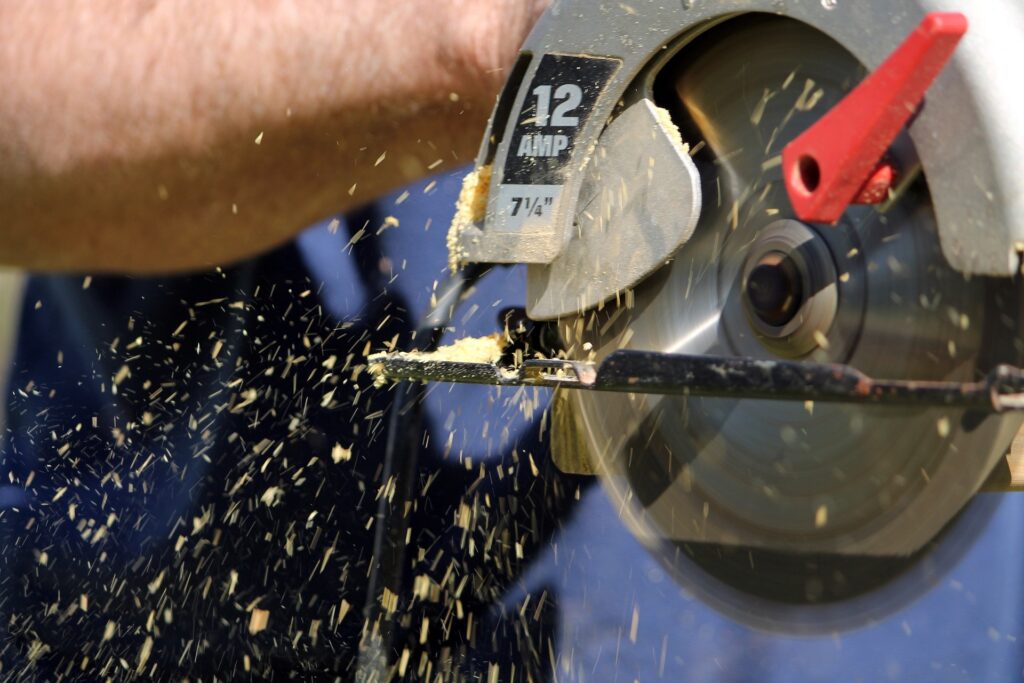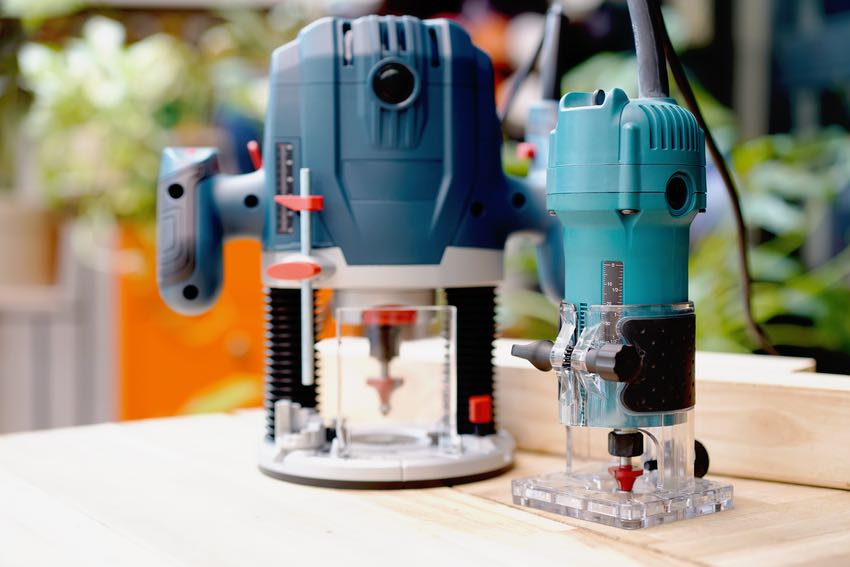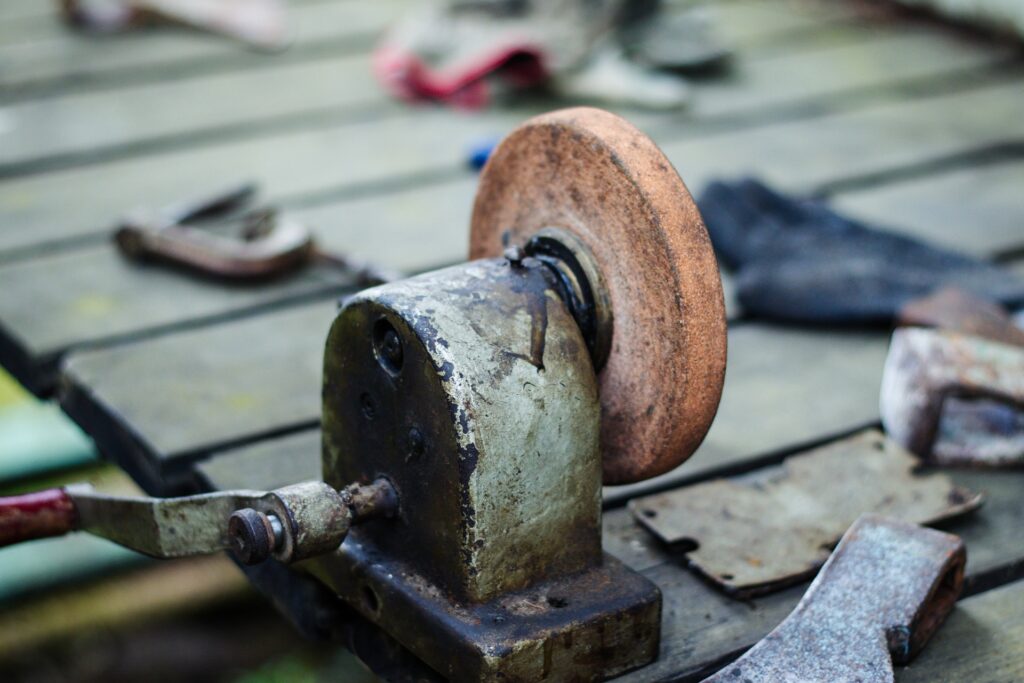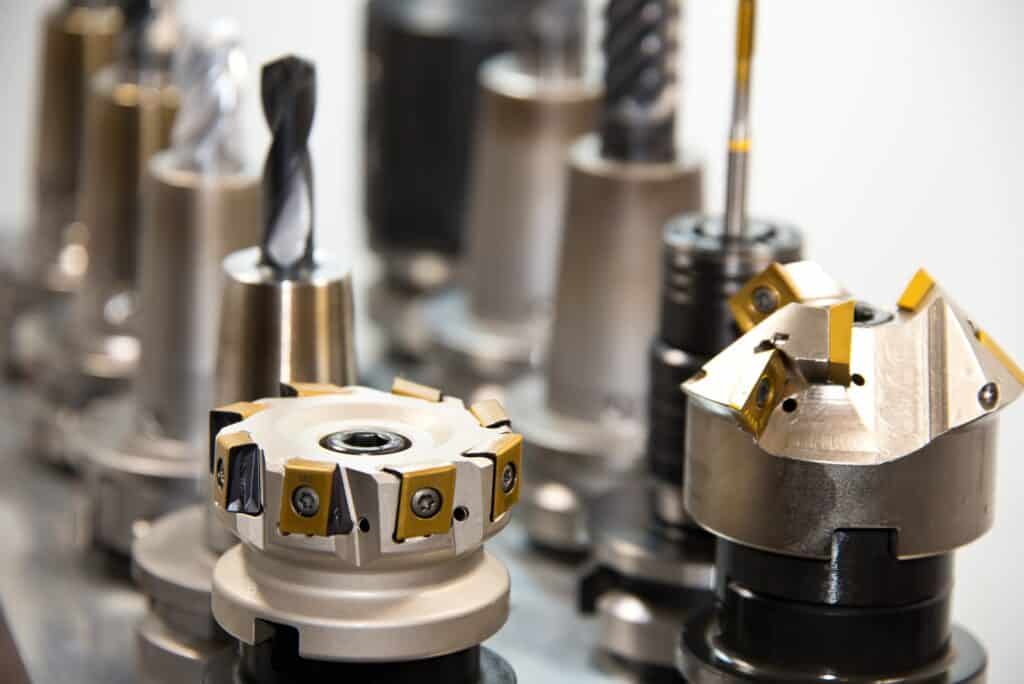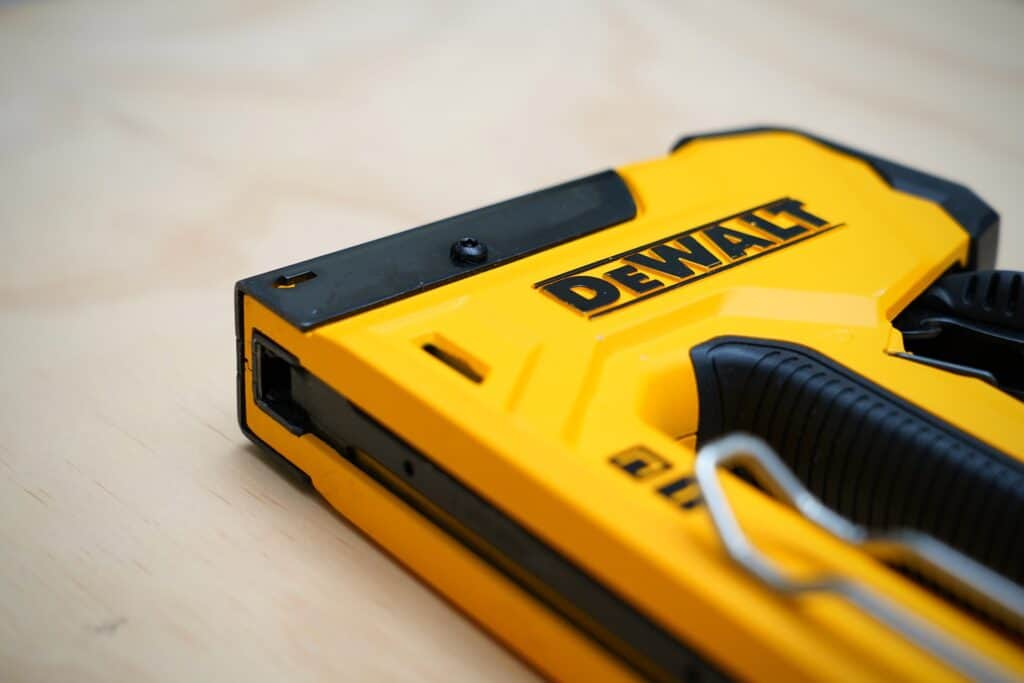This article discusses the significance of jigsaw power tools for DIY enthusiasts and craftsmen, highlighting their precision and versatility. It provides tips for efficient and safe jigsaw use, such as blade selection and workpiece security. The article also covers advanced techniques, including curved cuts and scroll sawing. Safety precautions are emphasized, and the article concludes by encouraging readers to embrace the potential of jigsaw power tools for various projects.
Category Archives: Blog
Your blog category
In the world of workshops, the workbench stands tall as the most crucial tool. It provides a solid foundation for various tasks, offers versatility, organization, and customization options, ensuring durability and safety. Choosing the right workbench, maintaining it, and appreciating its role as the foundation of all operations are key factors in any workshop.
Selecting the right nails is crucial for project success in woodworking, construction, and DIY. Factors like material, size, head type, and environmental conditions matter. Common nail types include common, finish, brad, roofing, masonry, casing, duplex, and coil nails. Follow practical tips, consult building codes, and prioritize safety for strong, secure connections.
This article explores circular saws, essential tools for woodworking and construction, favored by DIY enthusiasts and professionals. It covers types of circular saws and their applications, aiding readers in choosing the right tool. Additionally, it provides safety tips for optimal usage, emphasizing the versatility and importance of circular saws in various projects.
Choosing the correct angle grinder is crucial to guaranteeing efficiency and safety while attaining the best possible outcomes for your work. Angle grinders are incredibly useful and adaptable instruments for a variety of jobs, including cutting, grinding, polishing, and sanding. However, because there are so many options on the market, choosing the best angle grinder can be difficult. It’s critical to comprehend your unique requirements as well as the salient characteristics of angle grinders in order to make an informed decision and make the most of your instrument. Whether you’re a skilled tradesman or a do-it-yourself enthusiast, this article will identify the process of selecting the best angle grinder for your specific needs in this blog post.
With the help of modern farming technology, agriculture is becoming a highly sustainable and productive sector. Since agriculture’s modest beginnings as a fundamental subsistence activity, it has advanced significantly. It is a highly automated and sophisticated enterprise that feeds billions of people globally today. This change has been made possible by modern farming equipment, which has allowed farmers to minimise waste, boost output, and implement more sustainable practises. We’ll look at some of the most recent farming advancements that are influencing farming in the future in this blog post.
Routers are an indispensable tool in the world of woodworking and DIY projects. No matter how inexperienced you are with woodworking, understanding the basics of using a router can significantly expand your capabilities and enhance the quality of your work. In this comprehensive guide, we’ll delve into router basics, from understanding the different types of routers to exploring essential router techniques and safety tips.
In the world of DIY and craftsmanship, precision tools are indispensable allies that offer a myriad of benefits. In the world of do-it-yourself (DIY) projects and craftsmanship, the right tools can make all the difference. While any tool can be helpful, precision tools stand out for their ability to provide accuracy, consistency, and enhanced control over your projects. In this article, we discover the many benefits of precision tools in DIY and craftsmanship, highlighting how they can raise your skills to new levels of excellence.
Hammers are one of the most basic and versatile hand tools used across various industries and for a wide range of tasks. From pounding nails to breaking concrete, hammers come in many types, every one designed for a specific purpose.
In this blog post, we’ll demystify hammers by exploring the different types and their uses, helping you choose the right tool for your next project.
Mitre saws are indispensable tools in the world of woodworking and construction.
Mitre saws, often referred to as chop saws or drop saws, are a woodworker’s best friend when it comes to making precise crosscuts and mitre cuts in wood, metal, and other materials. These versatile power tools come in various types, each designed for specific tasks.
In this primer, we’ll take a deep dive into the world of mitre saws, exploring their types, features, and important safety advice to make sure you make the most of these potent instruments.
Greenhouse technology revolutionizes agriculture by enabling controlled environments for enhanced crop quality, year-round production, and increased yields. It promotes sustainability with water and energy efficiency, reduced land requirements, and minimized chemical use. Greenhouses enable precision agriculture, diverse crop cultivation, local food production, and serve as ideal environments for research. As the planet confronts climate change and rising populations, greenhouse agriculture presents a viable solution for food security and minimizing farming’s environmental impact.
Selecting the right angle grinder is critical for efficiency, safety, and successful completion of tasks. Angle grinders are versatile power tools used for cutting, grinding, polishing, and sanding various materials. Factors to consider include the grinder’s application, disc size, motor power, safety features, power source (corded or cordless), and additional features such as dust extraction and tool-free disc changing systems. Budget and brand reputation should also be taken into account.
A well-organized workshop is essential for productivity, safety, and tool longevity. Tool organization enhances efficiency, safety, prolongs tool life, and saves time and money. Various tool storage solutions include pegboard walls, tool cabinets and chests, wall-mounted shelves, rolling tool carts, magnetic strips and racks, toolbox and tote bags, and DIY custom storage. Regular tool collection assessment, labelling, inventory, and a clean, clutter-free workspace are key tips for maintaining an organized workshop. Storing materials with proper ventilation and precautions is also important.
Technological advancements in carpentry tools are transforming the field of woodworking. Modern inventions such as digital measuring tools, CNC machines, advanced saw technology, cordless tools, dust extraction systems, smart workbenches, wood stabilizers and enhancers, ergonomic hand tools, augmented reality apps, online platforms for collaboration and learning, and eco-friendly materials and tools, are enhancing precision, productivity, safety, and sustainability in woodworking. This evolution allows for creativity and innovation while maintaining traditional woodworking principles.
Sharpening tools is an essential skill for craftspeople, involving grinding and honing to create a keen edge. Traditional sharpening tools include whetstones, diamond stones, honing steels, and strops. The process entails preparing the stone, finding the correct angle, grinding, honing, and stropping, with a consistent angle maintained throughout. Different tools require distinctive techniques, and caring for sharpening tools, as well as safety considerations, are imperative. The art of sharpening enhances work efficiency and safety.
Fasteners, specifically bolts, nuts, and washers, are vital in construction and manufacturing industries. Bolts are externally threaded anchors used with a nut to join components. Nuts provide the clamping force for their bolt counterparts. Washers protect the surface and help prevent loosening due to vibration. Understanding the diverse types, uses, and selection of these fasteners is crucial for integrity, safety, and longevity of structures. Proper selection, application, installation, and maintenance practices alongside material and grade considerations are pivotal in the successful use of these components.
Wrenches are multi-faceted tools used commonly by mechanics and do-it-yourself enthusiasts, with designs suited for specific applications. Types include open-end, box-end, combination, adjustable, and socket wrenches for general tasks, and specialized variants like torque, pipe, Allen, strap, and spud wrenches for unique roles. Additionally, there are wrenches designed explicitly for tasks such as oil filter replacement and spark plug removal. Their efficacy is derived from aspects like leverage, adjustability, material, and handle design. Safety and maintenance, including proper storage and lubrication, are vital for their effective use.
The art of accurate measuring is a significant skill in various fields like science, engineering, cooking, and woodworking. It involves using essential tools such as rulers, calipers, micrometers, scales, protractors, and thermometers with precision. Key techniques include zero error correction, precise reading, consistency, appropriate tool selection, and parallax error avoidance. Advanced techniques involve laser distance measuring, Coordinate Measuring Machines (CMMs), and interferometry. Accurate measurements are vital for safety, quality, and precision in work and everyday tasks, making it a foundational and indispensable skill.
Drill bits are invaluable tools used in construction, woodworking, metalworking, and DIY projects for creating holes in diverse materials. They come in varied types, each designed for specific applications and materials such as wood, metal, concrete, and more. Key types include twist, brad point, spade, Forstner, masonry, HSS, cobalt, auger, countersink, and step bits. The material from which a drill bit is made impacts its performance and durability significantly. Maintenance practices like sharpening, cooling and lubrication, proper storage, and post-use cleaning enhance the longevity and performance of drill bits.
Choosing between corded and cordless power tools depends on your requirements. Corded tools provide consistent power, unlimited runtime, and lower cost but limit mobility and require cord management. Cordless tools offer portability and convenience without cord hassles, but they have limited runtime and a higher initial cost. Factors to consider include task requirements, portability, power source, cost, and battery technology. The choice depends on whether continuous power or portability is more important.
Organizing a workshop effectively enhances productivity and enjoyment in DIY projects. A well-organized workshop features proper tool storage such as pegboards, wall-mounted systems, tool chests, cabinets, workbenches with integrated storage, tool racks, shelves, rolling tool carts, magnetic tool holders, drawer organizers, clear storage bins, and tool pouches. These storage solutions help maintain a tidy environment and ensure easy access to tools, improving efficiency in carrying out projects.
The materials used in tools, particularly steel and titanium, significantly affect their performance, durability, and versatility. Steel, known for its strength, durability, and hardness, is perfect for heavy-duty tasks. It resists corrosion and withstands high temperatures. On the contrary, titanium, while not as hard as steel, boasts a low density, high strength-to-weight ratio, and stellar corrosion resistance, making it suitable for lightweight and corrosive-prone applications. The selection of one material over another depends on the task, environmental factors, and tool characteristics required.
Maintaining tools properly is crucial for their lifespan and performance, and to ensure safety. Tool maintenance involves regular cleaning, inspection for damage, sharpening blades, lubricating moving parts, rust prevention, and careful storage. It’s also necessary to follow the manufacturer’s guidelines, use tools properly, prioritize safety, and seek professional help when required. Proper tool maintenance is cost-effective and enables efficient working.
Tools have always been at the forefront of human innovation, enabling us to craft, build, and repair. In modern times, whether you’re a professional tradesperson or a DIY enthusiast, having the right tools is essential. But, with a plethora of brands available, how do you discern the best from the rest? Let’s dive into some of the world’s top tool brands and uncover what makes them the cream of the crop.



